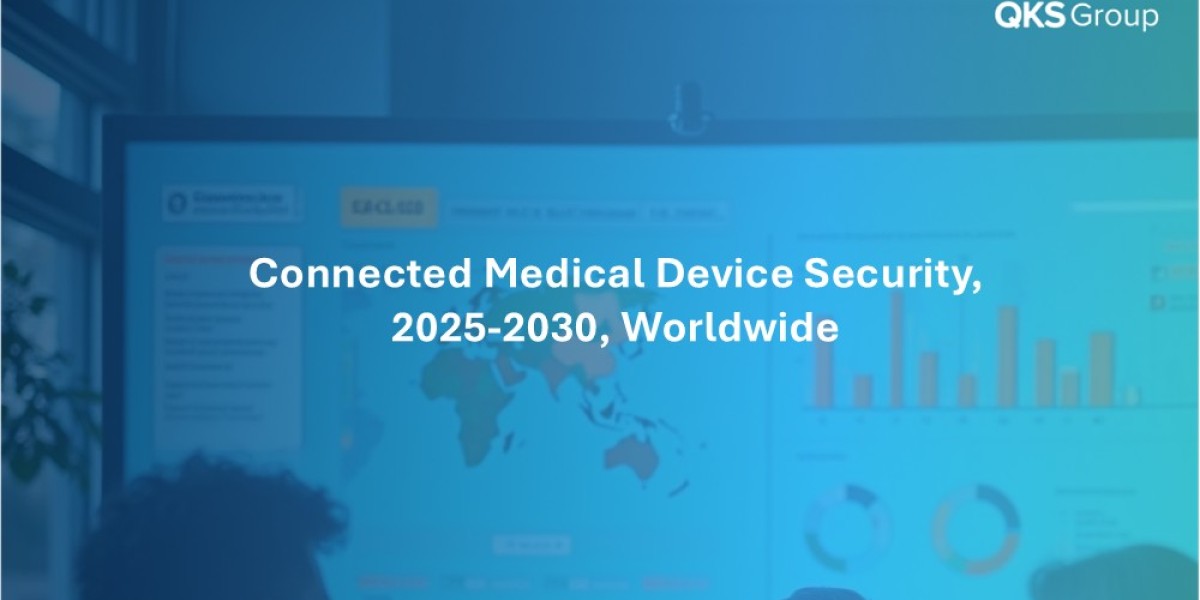QKS Group reveals a Connected Medical Device Security market projected to reach $1.1 billion by 2030, growing at a strong CAGR of 22.41% from 2025 to 2030. This accelerated growth highlights the rising importance of securing medical devices in an increasingly connected healthcare ecosystem. As the healthcare sector undergoes digital transformation, connected medical devices—also known as the Internet of Medical Things (IoMT)—have become an integral part of modern clinical operations. But with this advancement comes a surge in cybersecurity risks that health delivery organizations (HDOs) can no longer afford to ignore.
Why IoMT Security Has Become Mission-Critical
The Connected Medical Device Security Market is gaining momentum as IoMT devices transition from optional tools to essential components in healthcare delivery. Today’s medical environment relies heavily on smart infusion pumps, imaging systems, remote monitoring devices, wearables, surgical robots, and more—all of which generate real-time patient data and enable precision care.
However, this technological progress has also captured the attention of cybercriminals. IoMT devices have emerged as a major vector for ransomware, malware, and targeted intrusions, posing risks far beyond financial loss. Unlike attacks on traditional IT systems, IoMT-related breaches can escalate into life-threatening situations, where tampered devices or delayed care can potentially result in human fatalities.
Unique Challenges in Securing Medical Devices
Securing connected medical devices is an extremely complex undertaking due to several factors:
- Proprietary device protocols
Medical devices often run on closed, proprietary systems. Most manufacturers do not allow:
- Security agents
- Endpoint monitoring tools
- Software modifications
This severely limits an HDO’s visibility and control over devices already deployed in its environment.
- High-risk attack surface
IoMT environments extend beyond traditional IT and include:
- OT devices
- Building management systems
- Clinical IoT
- Edge-connected systems
Any vulnerability across these layers can be exploited to compromise medical workflows.
- Operational sensitivity
Medical devices must function flawlessly at all times. Any downtime, performance lag, or unplanned updates triggered by conventional cybersecurity tools can risk patient safety—making security orchestration even more delicate.
- Massive device volume and heterogeneity
Hospitals today operate tens of thousands of connected devices, often lacking:
- Accurate inventory
- Device classification
- Usage tracking
- Risk scoring
Manual inventory management is nearly impossible.
Growing Security Incidents Heighten Urgency
Healthcare continues to be a top target for cybercriminals. In recent years:
- Ransomware attacks on HDOs have disrupted clinical operations and compromised sensitive patient data.
- Data breaches involving medical devices have exposed millions of health records.
- Building management system malfunctions, triggered by cyber intrusions, have affected hospital climate control, oxygen supply systems, and surgical environments—directly impacting patient safety and outcomes.
These alarming incidents reaffirm the necessity for specialized solutions tailored for the evolving needs of IoMT environments.
Connected Medical Device Security: A Unified Defense Layer
Connected medical device security solutions are designed to secure IoT, OT, IT, and edge devices across an HDO’s network. These platforms deliver comprehensive protection against threats, vulnerabilities, and unauthorized data access.
Key capabilities include:
- Automated Asset Management
Modern HDOs struggle with the lack of visibility across devices. Security platforms provide:
- Automatic detection of managed and unmanaged assets
- Real-time device profiling
- Accurate inventory and lifecycle tracking
- Device behavior analytics
This unified device intelligence reduces operational inefficiencies and supports clinical planning.
- Continuous Monitoring and Threat Detection
With AI- and ML-driven engines, these solutions:
- Monitor device behavior
- Identify anomalous activity
- Detect rogue devices
- Block unauthorized communication
- Prevent lateral movement across the network
This approach prevents both internal and external attack attempts.
- Compliance and Governance
HDOs must adhere to stringent standards, including HIPAA, FDA guidance, and regional data protection regulations. Advanced security platforms:
- Automate compliance checklists
- Generate audit-ready reports
- Provide real-time risk dashboards
This ensures healthcare organizations maintain a resilient and compliant security posture.
- Integration with Clinical and Security Workflows
Integrated insights support:
- Incident response teams
- Clinical engineering
- Biomedical device management
- IT security operations
With actionable intelligence, teams can prioritize risks, reduce downtime, and streamline decision-making.
Benefits for Health Delivery Organizations
As the Connected Medical Device Security Market matures, HDOs are realizing multiple strategic benefits:
- Enhanced patient safety through reduced device tampering risks
- Optimized clinical efficiency with better asset performance and availability
- Reduced operational costs via automated inventory and device lifecycle management
- Lower cybersecurity risk exposure through end-to-end visibility and monitoring
- Strengthened infrastructure resilience with protected IoT, OT, IT, and edge assets
Ultimately, these capabilities reinforce trust in connected healthcare systems and support the delivery of safe, uninterrupted medical services.
Conclusion
The rapid growth of IoMT is reshaping modern healthcare, but it also brings unprecedented cybersecurity challenges. As QKS Group highlights, the accelerating expansion of the Connected Medical Device Security Market underscores the urgency for HDOs to adopt advanced protection mechanisms. With the market projected to reach $1.1 billion by 2030, healthcare organizations must prioritize specialized security solutions that safeguard medical devices, protect patient data, ensure clinical continuity, and strengthen operational resilience. In a world where the line between technology and patient care continues to blur, connected medical device security is no longer optional—it is essential.
#ConnectedMedicalDeviceSecurity #IoMTSecurity #HealthcareCybersecurity #MedicalDeviceProtection #HealthTechSecurity



